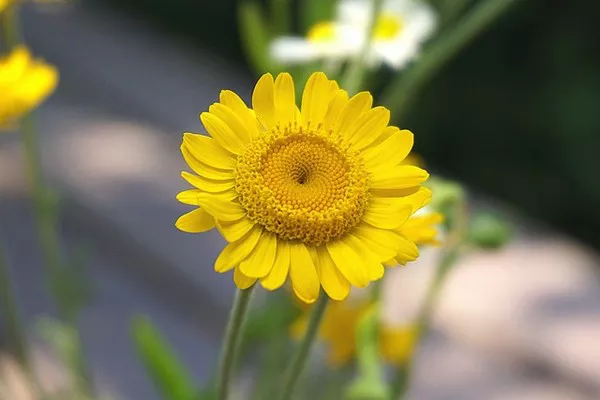Flowers have captivated humans for centuries with their beauty, colors, and fragrance. Among the plethora of floral hues, yellow flowers stand out for their vibrancy and cheerful appeal. Throughout history and across various cultures, yellow flowers have carried diverse meanings and symbolism, touching on themes of friendship, joy, happiness, and even jealousy. In this article, we explore the significance and interpretations of the yellow flower, shedding light on its cultural, emotional, and spiritual connotations.
Symbolism of Joy and Happiness
Yellow is often associated with sunshine and warmth, making yellow flowers powerful symbols of joy and happiness. The bright and uplifting color evokes feelings of positivity and optimism, representing the radiant aspects of life and fostering a sense of cheerfulness. The presence of yellow flowers in bouquets and gardens is believed to bring smiles to people’s faces and infuse spaces with a sense of joy.
Friendship and Companionship
In the language of flowers, yellow blooms are commonly associated with friendship and companionship. Gifting yellow flowers to a friend can be a heartfelt gesture, symbolizing appreciation, support, and the bond between friends. Yellow flowers are often exchanged on special occasions or simply to brighten someone’s day and express feelings of camaraderie and affection.
New Beginnings and Renewal
Yellow flowers also carry symbolism related to new beginnings and renewal. As a color that represents energy and optimism, yellow flowers can serve as an expression of hope for a fresh start or a positive change in life. These blooms can be given to someone embarking on a new journey, celebrating a milestone, or seeking a sense of rejuvenation.
Expression of Gratitude
Yellow flowers are ideal for expressing gratitude and saying “thank you.” Whether it’s for a small favor or a significant act of kindness, presenting someone with yellow flowers is a thoughtful way to convey appreciation and acknowledge their efforts. The vibrant color serves as a visual reminder of the positivity that their actions brought into your life.
Symbolism of Jealousy
While yellow flowers are primarily associated with positive emotions, they can also carry negative connotations in certain contexts. In some cultures, yellow flowers, particularly yellow roses, may symbolize jealousy, envy, or a sense of betrayal. However, it is essential to consider cultural differences and personal associations when interpreting flower symbolism.
Cultural and Spiritual Significance
Yellow flowers hold cultural and spiritual significance in various traditions around the world. In Chinese culture, yellow is often linked to royalty and prosperity, signifying the emperor’s divine connection to heaven. Yellow chrysanthemums are a symbol of autumn and are used in offerings during festivals and ceremonies.
In Hinduism, the yellow marigold is a sacred flower and is widely used in religious rituals and celebrations. The marigold’s vibrant hue is believed to represent the sun’s energy and is associated with auspiciousness and prosperity.
Additionally, in Buddhism, the lotus flower is significant, and its yellow variety symbolizes spiritual enlightenment and purity of the mind.
Healing and Well-Being
Beyond their emotional symbolism, yellow flowers are believed to possess healing properties and can be used in alternative medicine practices. In aromatherapy, essential oils derived from yellow flowers, such as chamomile and yarrow, are used to promote relaxation and reduce stress. Yellow flowers are also sometimes used in herbal remedies to aid in digestion and improve overall well-being.
Yellow Flowers in Different Cultures
The meanings and significance of yellow flowers can vary across cultures, and it is essential to consider the context and cultural background when interpreting their symbolism. In Japan, for example, yellow flowers are often associated with jealousy, whereas in Western cultures, they generally signify happiness and joy.
In some cultures, yellow flowers are used as symbols of remembrance and can be seen in funeral arrangements to commemorate a loved one’s life. In contrast, other cultures may use yellow flowers to celebrate life and mark occasions of joy and abundance.
Conclusion
Yellow flowers possess a unique charm and hold diverse symbolism that touches on various aspects of human emotions and cultural beliefs. From joy and happiness to friendship and new beginnings, yellow blooms have the power to uplift spirits and convey heartfelt sentiments.
As with all forms of symbolism, the interpretation of yellow flowers may differ across cultures and individual perspectives. Their significance can range from expressions of gratitude and companionship to representations of jealousy or spiritual enlightenment. Understanding the meanings behind yellow flowers can add depth and sentiment to floral gestures, allowing individuals to convey emotions and intentions with greater thoughtfulness and appreciation.


